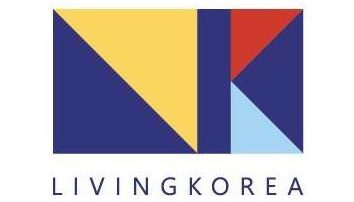Rumors of K-Pop Romance Between BTS’s J-Hope and TWICE’s Nayeon
K-Pop Romance Rumors: Are BTS’s J-Hope and TWICE's Nayeon Really Dating? The world of K-pop is no stranger to its fair share of drama and speculation. Recently, fans of this vibrant music scene have been swept up in a whirlwind of rumors swirling around two of its biggest stars: BTS’s J-Hope and TWICE’s Nayeon. Are they really dating, or is this just another case of fans reading too deeply into coincidental details? Let's dive into the key points to understand the story better. The TikTok Evidence That Sparked Rumors A TikTok video has set the K-pop fandom on fire, allegedly revealing evidence of a secret romance between J-Hope and Nayeon. Interestingly, none of the supposed "proof" includes images of the two together. Instead, fans have spotted individual photos taken at what appears to be the same location, dating back to at least 2022. These photos, along with meticulously analyzed selfies and fashion choices, have become the fan-driven foundation of this romantic speculation. However, in the realm of celebrity, appearances can be deceiving, raising the question: how much legitimacy do these coincidental clues actually hold? Couple-Style Selfies: A Misleading Clue? In January 2025, some eagle-eyed fans noticed that both J-Hope and Nayeon independently posted selfies that shared a striking resemblance and posed in a "couple-style." What does this mean? In the language of fans, these photos suggested a shared style or an unspoken connection between the two stars. However, location analysis revealed these photos were taken in different places. Whether intended or pure coincidence, the similarity spurred more speculation that these idols might be subtly hinting at their relationship through social media. While fans love to dream, it's vital to handle such speculation with caution until official confirmations arise. The Power of Luxury: Matching Louis Vuitton Accessories Another focal point in the rumor mill is the shared affinity both idols have for Louis Vuitton—a luxury brand they both represent professionally. Videos and images show both J-Hope and Nayeon with similar Louis Vuitton accessories, further fueling the gossip. Could their overlapping brand partnership be merely professional, or is it an indication of a personal relationship? A professional endorsement means they are likely to be spotted with similar items, underscoring that correlation doesn't always lead to causation in the bustling world of K-pop. Previous Dating Rumors: A Series of Unconfirmed Speculations J-Hope and Nayeon are no strangers to the rumor mill, with previous whispers of love interests playing a part in their public lives. Before this latest wave, Nayeon was previously linked to EXO's Suho due to a small carrot-shaped pouch—an accessory fans associated with Suho—causing theories to skyrocket over a possible romance. In 2023, another popular rumor linked her with GOT7's BamBam after his candid confession of a past crush. Yet, similar to the current situation with J-Hope, none of these have ever been substantiated or officially acknowledged by either party. Fan Reactions: Supportive Amidst Speculation Despite the speculation, fans on both sides—BTS's ARMYs and TWICE's ONCEs—have largely shown their support for the potential couple. In an entertainment industry where public dating is often met with backlash, this support is significant and suggests a cultural shift toward accepting idols' personal lives. Comments from fans range from extreme enthusiasm for the potential pairing to calls for privacy and respect for the idols’ actual dating choices. Neither Confirmed Nor Denied: The Official Silence As of now, both J-Hope, Nayeon, and their agencies have remained silent, neither confirming nor denying the rumors circulating online. This strategic silence is typical in such scenarios, allowing the buzz to simmer down as public interest naturally moves on to the next story. For J-Hope and Nayeon, this approach may protect their personal lives while keeping professional reputations intact, a delicate balance in the demanding world of K-pop. Envisioning Future Collaborations or Events While romance remains unconfirmed, what future collaborations or interactions could fuel—or extinguish—fan theories? Many fans already envision a joint presence at an event for Louis Vuitton, capitalizing on their existing professional ties. Such collaborations could keep the rumor mills churning or serve as a clarifying moment about the true nature of their relationship. Whatever the future holds, the current speculation highlights the complexities and joys of fandom in the digital age, where even a simple photo can set off waves of imagination across the globe. Conclusion: The Power of Imagination in K-Pop In conclusion, the potential romance between J-Hope and Nayeon, whether fictional or factual, showcases the powerful role of fan culture in shaping narratives about K-pop idols. Each hint, photo, or mention can carry significant weight, driving stories that captivate international audiences. As fans, observers, or curious onlookers, we must balance our thirst for connection with respect for the privacy and professionalism of those we admire. What do you think—are these rumors destined to reveal a hidden truth, or are they another chapter in the intricate dance between celebrity and fan dreams? Let us know your thoughts in the comments below!

